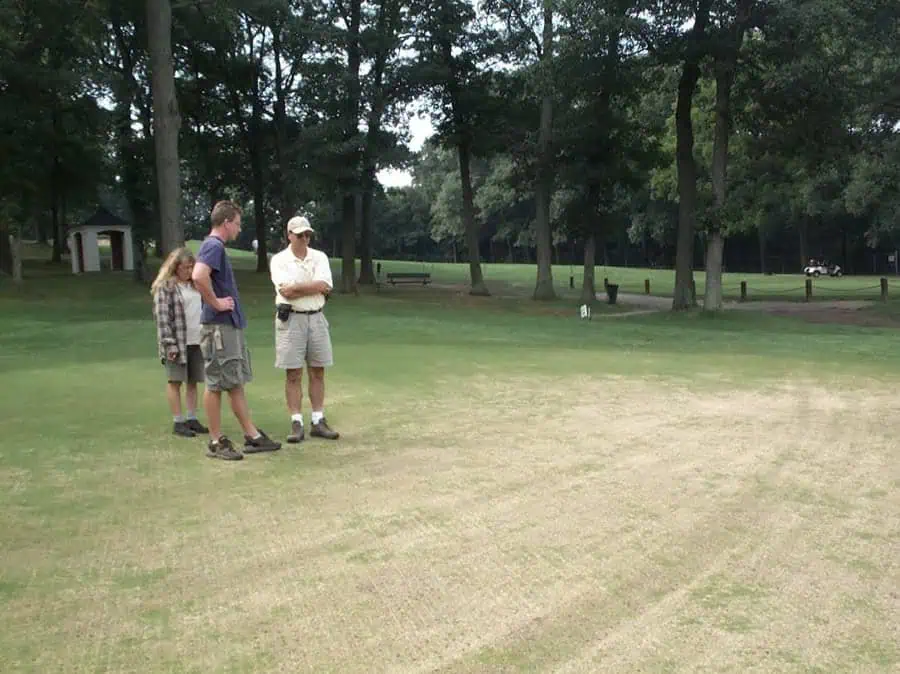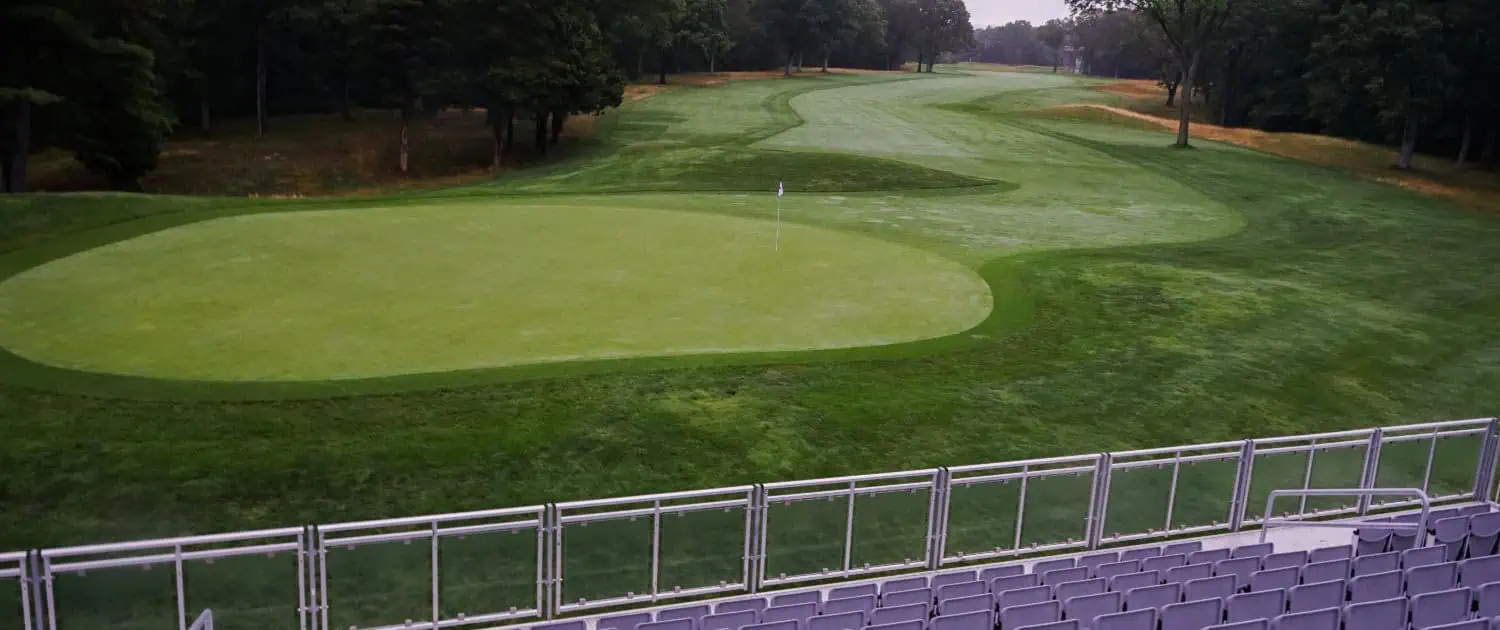The picture of total destruction bears the name “The Funeral”. It dates from August 2001 and shows the second green of the Bethpage Green Course in the US state of New York. The same Bethpage where the Ryder Cup took place in the fall of 2025, albeit on the Black Course.
No, there is no longer much grass to be seen on the putty surface. Frank Rossi, Associate Professor in the Department of Agriculture and Life Sciences at Cornell University in the US, says today about this moment: “Ecologically I predicted that to my colleagues that as soon as pesticide use, mowing heights, fertilization programs, etc. changed we would see a shift. I did not anticipate the full blown outbreaks.”
Rossi knows the grass disease Dollar Spot, which is increasingly affecting golf courses around the world, down to the last detail. When the New York State Parks decided at the beginning of this millennium to massively reduce their use of pesticides for the health of visitors, this also affected their use on golf courses. With the help of an accompanying scientific program at Cornell University under the direction of Frank Rossi, the so-called Integrated Pest Management was introduced, which is now standard in large parts of Europe, for example.
In essence, the idea is not to permanently treat grassland with pesticides as a preventative measure, but to try to produce resistant grass that is much better able to withstand diseases, so that significantly less chemicals are needed anyway. “But over the entire period we have reduced all pesticide use (not just fungicides but herbicides and insecticides) 65%, ” says Rossi some 25 years later, drawing a positive balance for the project in New York, which was groundbreaking for the American golf market 25 years ago. Integrated Pest Management was not yet the order of the day in Europe at that time either.
Subscribe to our newsletter!
News & trends about sustainability in golf
The changeover was not easy. “At first everyone hated it,” Rossi recalls of the early days. Until then, the greenkeeping team had always applied fungicides every two weeks as a prophylactic measure. There were no empirical values or prediction models for Dollar Spot that could predict what would happen without the use of chemicals. The golfers simply wanted good quality. However, at the start of the project, this was largely gone. At times, greens on the green course even had to be taken out of play.
Integrated Pest Management has now been implemented on all 23 golf courses at Bethpage State Park. We wanted to find out from Frank S. Rossi what the key insights and lessons he has learned in his 25 years with the Dollar Spot disease are:
How exactly did you start the changeover?
Frank S. Rossi: We created the “alternative culture” treatments on 9 greens and many of those did better with a focus on nitrate, iron, rolling, in season spiking. But the 6 greens that did not receive any pesticides the first two years made it to July/August first dollar spot then pythium and brown patch then closed greens til next spring and lost revenue with reduced prices due to 3 to 4 greens out play.
What was the biggest learning experience for you personally?
Frank S. Rossi: Dollar spot is a great example of when we don’t pay attention to the most common problem because we have “many” chemical solutions. But when you don’t have the cheap, convenient and affordability of a pesticide, you must approach management more holistically. We developed and promoted the use of risk models to inform supperintendents on when disease pressure will be high, then use the EIQ (Environmental impact quotient) to select the most benign option for management. Interestingly, now that Ming-Yi chou has published a few papers on turfgrass microbiomes we see that the more you spray for dollar spot the more you have to spray
Did you record costs and labor hours during the management changeover? What was cheaper and less labor-intensive?
Frank S. Rossi: Yes we did. Routine pesticide use reduces labor needs for many practices, but you spend more time spraying. Now that the greens have stabilized ecologically and adapted to less pesticides, the care of them is less intense in all aspects, feeding, pesticides, cultivation etc.
What is your tip for any head greenkeeper who wants to make a change in their approach to avoiding or treating dollar spot?
Frank S. Rossi: Create a good growing environment. If you don’t have the most resistant varieties or species of grass its harder. I might allow some turf loss in an effort to spray less overtime by building some natural resistance. Then keep track of disease risk models to know pressure, then for dollar spot I’d roll my putting greens 5 to 7 times per week during high risk periods, keep soil moisture adequate (dollar spot likes dry soil and wet foliage), then during high risk periods I’d use some low EIQ products and by all means stay away from chlorthalnil.
Editor’s note: The use of chlorothalnil, which is considered harmful to health and the environment and has long been one of the most widely used fungicides in lawn care, has been banned in the EU, the UK and Switzerland since 2020. It is still permitted in the USA under certain conditions.







